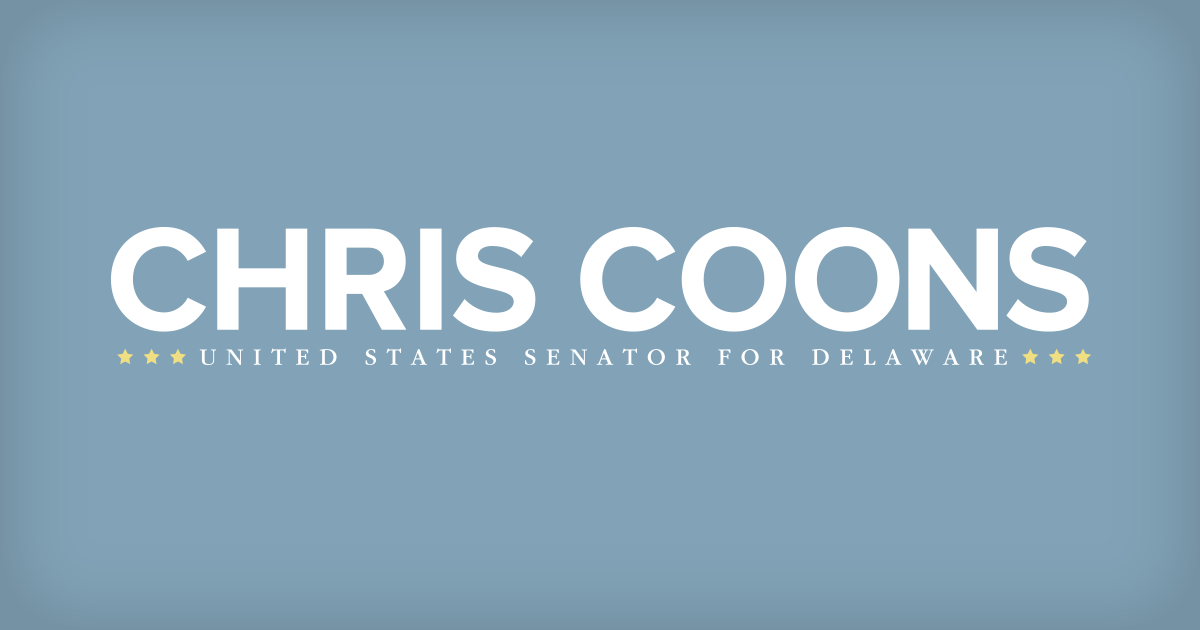Source: United States Senator for Delaware Christopher Coons
WASHINGTON – U.S. Senator and Chair of the Senate Judiciary Subcommittee on Intellectual Property Chris Coons(D-Del.) chaired a hearing yesterday focused on exploring the impact of artificial intelligence (AI) on innovation and how to regulate AI in a way that promotes innovation so that the United States maintains its competitive edge.
The hearing, entitled “Artificial Intelligence and Intellectual Property — Part I: Patents, Innovation, and Competition,” welcomed intellectual property (IP) experts from business and academia to discuss how companies are using AI to drive innovation; patent law questions around AI inventions, and how the laws might need to adapt to account for AI technology; and steps the United States could take to position itself as a global leader on AI and IP rights. At the hearing, Senator Coons discussed AI’s major benefits for innovation; the importance of establishing the United States’ leadership in AI; and the need for policies that consider data rights to protect AI systems and bring clarity to patent eligibility law.
The subcommittee intends to hold hearings on the intersection of AI and copyright law later in the year.
A video and transcript of Senator Coons’ opening remarks are available below.
WATCH HERE.
Senator Coons: I’d like to call this hearing to order. Thank you to all of our witnesses for participating today. I’d like to thank Ranking Member [Thom] Tillis [R-N.C.] and your staff for working so well and closely with mine to put together this hearing on a consensus basis. As you can tell from the attendance, this is a topic of wide interest, and so, to my colleague and friend, Senator [Mazie] Hirono [D-Hawaii], I am looking forward to a robust hearing on the topic of artificial intelligence and intellectual property.
We’re going to explore some of the recent developments in AI, and in particular, patents; and the impact of AI, innovation, and U.S. competitiveness. Make no mistake: AI presents novel questions across a wide range of areas of IP policy, and today’s the first in a series of hearings that this subcommittee will have looking at the intersection of artificial intelligence and intellectual property law and policy. We’ve all heard about different tools like ChatGPT or DALL-E; impressive new generative AI tools that have opened up so many creative avenues and raised many concerns. These tools are just a few of many popular uses, but generative AI has already been put to work to help solve a wide range of very serious and substantive problems.
Drug development is just one particularly compelling example. Over the last few decades, antibiotic discovery developments have become increasingly difficult and expensive. Many researchers have given up because new antibiotic drugs have not been able to overcome the threat of antibiotic disease. In fact, no antibiotic classes have been introduced since the 1980s. Enter AI. Researchers at MIT [Massachusetts Institute of Technology] recently trained an AI model using a large collection of diverse molecules and then used the model to make a new and potent antibiotic that is effective against antibiotic-resistant bacteria. This discovery didn’t take years; it didn’t take weeks; it took a few days. I share the story because many of the conversations around AI focus on the potentially harmful uses of the technology: threats of misinformation and bias. Highlighting these uses is important, but I believe we also have to act thoughtfully to set critical safeguards. It’s important to shine a light on how AI is being used to innovate. Drug development is one compelling example; others include its role in efforts to combat climate change, to address our computer chips shortage, to create renewable energy sources. These innovations raise new, interesting, and complex patent law issues, including whether innovations facilitated by AI are or should be patentable, and if so, who should be listed as the inventor? Currently, in the U.S., many AI-generated inventions are not patentable, because the Supreme Court has determined the law does not permit including a non-human inventor on a patent application.
The decisions we make in Congress about whether and how to protect AI-related innovations will also have significant consequences for U.S. innovation and competitiveness. We need to ensure we establish a rights regime that encourages AI-generated innovation to stay here in the United States, instead of incentivizing innovators to turn to other countries with more favorable laws to protect their AI-generated inventions and other emerging technologies. Despite the critical role of IP in AI innovation, IP considerations have largely been missing from proposed AI regulation frameworks. Neglecting IP, in an effort to regulate AI, would have serious unintended consequences for [our] innovation ecosystem, our national security, and our economic competitiveness. In contrast, competitors like China recognize IP policy is an important tool in national strategies for AI and other emerging technologies. China has elevated the role of its patent and trademark office and has even been exploring data rights as a new form of IP protection for AI.
So, what can we do? There are some initial steps we can take to ensure U.S. leadership on AI policies. I think it’s critical that we include IP considerations in ongoing AI regulatory frameworks and make certain the U.S. Patent and Trademark Office has a seat at the table. We should change our patent eligibility laws — and I suspect my colleague agrees — so that we can protect critical AI innovations. And last, we should consider whether other changes to our patent laws, or new and unique protections, may be necessary to encourage innovation in AI and emerging technologies.
I’m excited to explore these issues with you today with Senator Tillis’ cooperation. We have a superb panel with a diversity of views and perspectives. You will — I suspect — find five minutes a bracingly short period in which to explain them. We are grateful for your lengthy submitted written testimony and look forward to your individual summaries.
